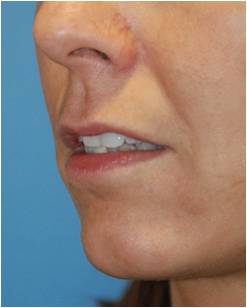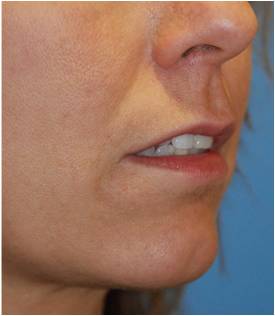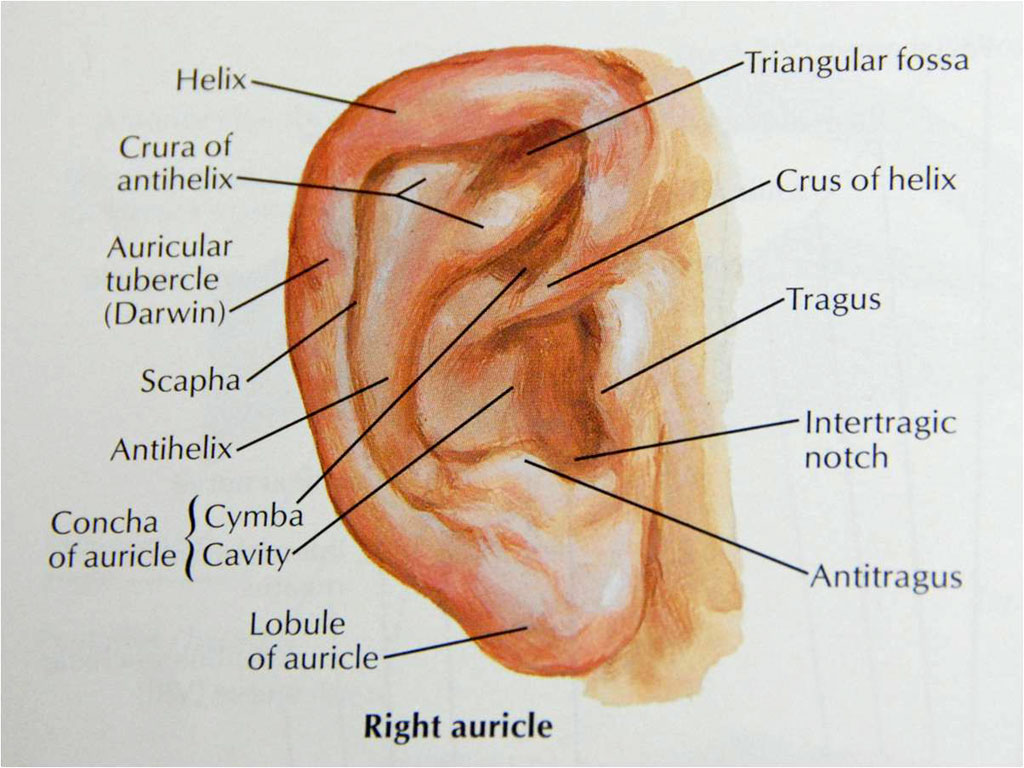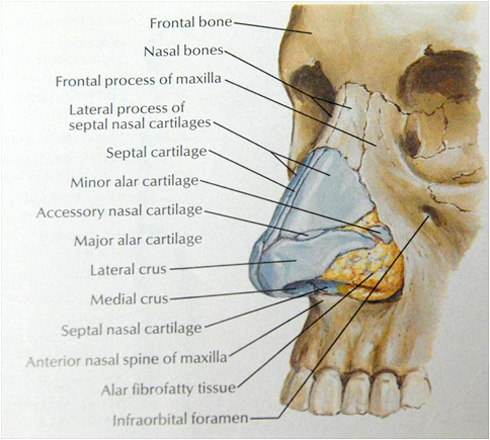Have you wondered if you need to have the skin at the sides of your nostrils reduced or what it takes to make your nose less big at the base of your nose at the level of the nostrils through rhinoplasty (Dr Young near Downtown Bellevue, WA). If you take a look at the first picture. The green arrow shows where the alae, the tissue that covers the nostril, attaches. If the alae flares (at the blue arrow) greater than 2 mm than a significant amount of alar flare is present and a alar wedge excision would be an appropriate procedure to narrow the base of the nose which is shown in picture 2. Do you have a wide nasal base in the first place? Well if your nose at your base is bigger than the distance between your eyes, you could benefit from some modification of your nasal base. As described for the Alar Wedge Excision above. The third picture shows the Intercanthal width which is the distance between our eyes by the green arrow. The Yellow arrow shows the interalar width. If the Interalar width, the distance between the outsides of the alae, are larger than the intercanthal distance (or the distance between the eyes), than you could benefit aesthetically from some form of treatment to make the nose narrower in the nasal base area ( measured by the interalar width). When you don’t have alar flaring the excessive interalar width, is due to the lateral attachment of the alae (treated by VY advancement or cinching procedures), excessive size of the nostrils (nostril sill excision), or excessive tissue in between the alae (Cinching procedure, or treating the medial crura that makes up the columnella). First do you have excessive nostril size? If your nostrils are horizontally oriented and are wider than the width of the columnella a nostril sill excision would be a good consideration to narrow the interalar width. In the fourth picture, The green bracket shows the width of the columenella while the yellow bracketing shows the width of the nostrils. The green arrow shows the nostril sill area where the resection for the nostril sill should be in the horizontal portion as seen in the fifth picture. So in the fourth picture if the green bracket of the columnella is less wide than the nostril sill denoted by the yellow bracket, the nostril sill excision could be used to narrow the nasal base. If alar flaring and excessive nostril size are not present and you still have a wide nose as shown by the interalar width, you can then use VY advancements or cinching procedures to narrow the interalar width.
Thanks for reading, Dr Young
Dr Young specializes in Facial Plastic and Reconstructive Surgery and is located in Bellevue near Seattle, Washington








